The roar of a V8 engine, the sleek lines of a powerful chassis, and the undeniable sense of freedom they embody—these are the hallmarks of the American muscle car. Born from a unique cultural moment in the United States, these machines quickly carved out a legendary status, representing a potent blend of accessibility, style, and raw performance. Among the most revered names in this automotive pantheon are the Chevrolet Camaro and the Pontiac Firebird, two vehicles whose histories are so deeply intertwined they often appear as inseparable siblings in the annals of motoring.
For decades, these twin titans of the asphalt defined what a performance car could be for the American enthusiast, offering thrilling driving experiences and designs that captured the imagination. Their journey, from parallel development to distinct offerings, through periods of shared mechanics to ultimate discontinuation, mirrors the larger narrative of the muscle car itself. We embark on an in-depth exploration of these automotive icons, tracing their lineage, celebrating their power, and understanding their profound impact on American car culture, starting with the unique bond between the Camaro and the Firebird.
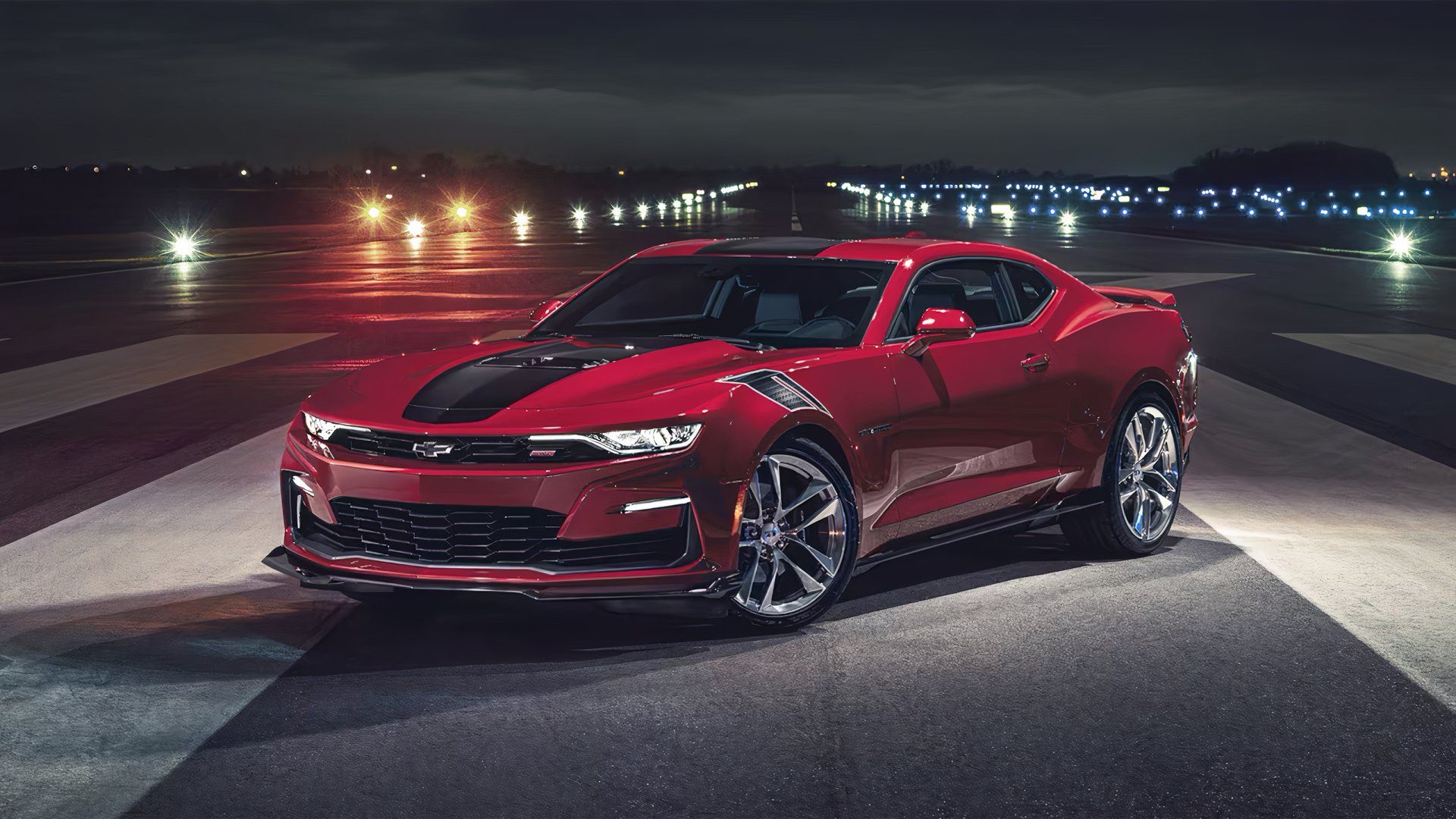
1. **Camaro and Firebird: Sister Cars – Shared Platform and Origin**
The story of the Chevrolet Camaro and Pontiac Firebird is one of shared beginnings and parallel paths, commencing in 1967 when General Motors sought to challenge the runaway success of the Ford Mustang. It wasn’t merely the Camaro that emerged from this strategic move; Pontiac, too, entered the burgeoning pony car market with its own distinct offering, the Firebird. These two vehicles, designed to capture the hearts of a new generation of drivers, instantly became synonymous with American performance.
From their inception until 2002, both the Camaro and Firebird were meticulously crafted on the same General Motors F-body platform. This rear-wheel-drive architecture was engineered specifically for pony cars, providing the foundational bone structure that defined their shared lineage. Consequently, they consistently shared most of their crucial dimensions and a recognizable general profile, making their underlying relationship evident to enthusiasts.
Beyond their core platform, the commonalities extended deep into their mechanical makeup. Both cars frequently utilized the same transmissions, featured identical suspension designs, and incorporated numerous other shared components. This strategic sharing of engineering and parts allowed GM to efficiently produce two distinct vehicles, each marketed by different divisions yet intrinsically linked in their creation and legacy. Their production at the same factories further cemented their inseparable bond, ensuring that their histories would forever be intertwined.
GM cleverly leveraged this shared platform to cater to different market segments. While the Camaro, under Chevrolet, aimed for broad appeal, offering performance with affordability and a sporty, youthful image, the Firebird, marketed by Pontiac, was positioned as a more upscale and performance-oriented counterpart. This strategic market positioning, despite their shared DNA, created a fascinating internal rivalry that fueled innovation and cemented their status as quintessentially American vehicles.
Car Model Information: 2018 Chevrolet Camaro 1SS
Name: Chevrolet Camaro
Manufacturer: Chevrolet
Production: 1966–2002,2009–2023
ModelYears: 1967–2002,2010–2024
Class: Pony car
BodyStyle: coupe,convertible
Platform: GM F platform,GM Zeta platform,GM Alpha platform
Layout: Front-engine, rear-wheel-drive layout
Categories: 1970s cars, 1980s cars, 1990s cars, 2+2 coupés, 2000s cars
Summary: The Chevrolet Camaro is a mid-size American automobile manufactured by Chevrolet, classified as a pony car. It first went on sale on September 29, 1966, for the 1967 model year and was designed to compete with the Ford Mustang. The Camaro shared its platform and major components with the Firebird, produced by General Motors’ Pontiac division that was also introduced for the 1967 model year.
Four distinct generations of the Camaro were developed before production ended in 2002. The nameplate was revived on a concept car that evolved into the fifth-generation Camaro; production started on March 16, 2009.
Production of the sixth generation of the Camaro ended in December 2023, for the 2024 model year.
Get more information about: Chevrolet Camaro
Buying a high-performing used car >>>
Brand: Chevrolet Model: Camaro
Price: $33,988 Mileage: 49,199 mi.
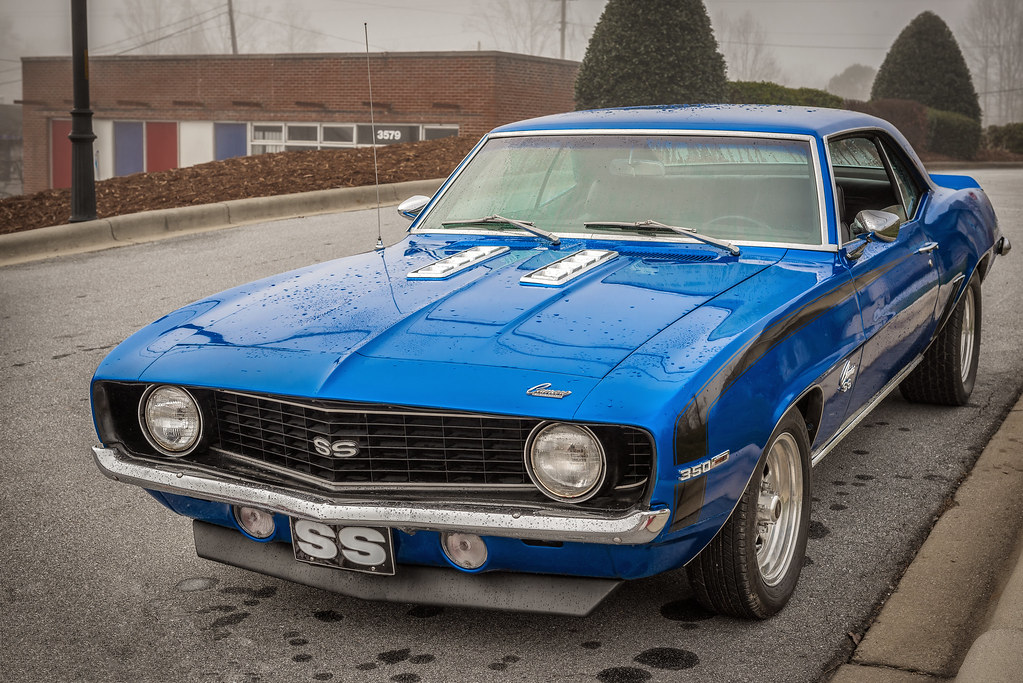
2. **Early Differentiation: Styling and Unique Engines (First and Second Gen)**
Despite their shared F-body platform and many structural components, the initial generations of the Camaro and Firebird showcased significant efforts at differentiation, particularly in their aesthetic and powertrain offerings. Examining first- and second-generation models side-by-side immediately reveals their common underlying body shape. However, the styling for each, especially at the front end, was quite distinctive, with the Firebird proudly sporting Pontiac’s signature split grille, a hallmark that gave it an immediate, recognizable identity on the road.
Beneath these stylistic variations lay an even more profound distinction: the engines. In the late 1960s and extending well into the 1970s, General Motors’ various divisions operated with a remarkable degree of autonomy when it came to their powerplants. This meant that Camaros were powered by Chevrolet engines, while Firebirds were exclusively equipped with Pontiac engines. This fundamental difference ensured that, despite their shared platform, the driving experience and character of each car remained unique.
The general displacement figures between the two cars might have often appeared similar, but the engines themselves were entirely different designs. For instance, in 1967, the Firebird offered Pontiac’s advanced new overhead-cam inline-six, a sophisticated engineering marvel for its time. In stark contrast, the Camaro’s inline-six was a more traditional pushrod unit, illustrating the distinct philosophies at play within GM’s divisions during this vibrant era of automotive development. This mechanical individuality contributed immensely to the unique appeal of each brand.
Car Model Information: 1985 Pontiac Firebird
Name: Pontiac Firebird
Caption: The second, third, and fourth generations of,the Pontiac Firebird Trans Am
Manufacturer: Pontiac (automobile)
Production: February 23, 1967 – August 30, 2002
ModelYears: 1967 – 2002
Class: Pony car,Muscle car
Platform: GM F platform
Related: Chevrolet Camaro
Layout: Front engine, rear-wheel-drive layout
Categories: 1970s cars, 1980s cars, 1990s cars, 2000s cars, All articles with dead external links
Summary: The Pontiac Firebird is an American automobile built and produced by Pontiac from the 1967 to 2002 model years. Designed as a pony car to compete with the Ford Mustang, it was introduced on February 23, 1967, five months after GM’s Chevrolet division’s platform-sharing Camaro. This also coincided with the release of the 1967 Mercury Cougar, Ford’s upscale, platform-sharing version of the Mustang.
The name “Firebird” was also previously used by GM for the General Motors Firebird series of concept cars in the 1950s.
Get more information about: Pontiac Firebird
Buying a high-performing used car >>>
Brand: Pontiac Model: Firebird
Price: $23,500 Mileage: 12,209 mi.
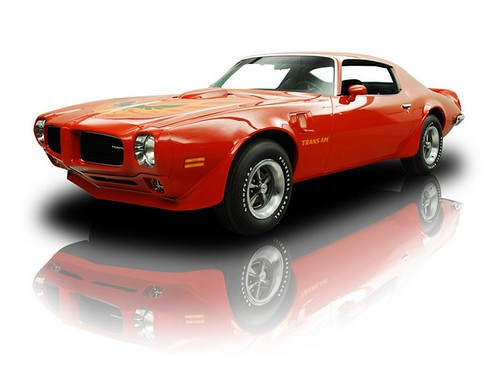
3. **The Powerhouse: Firebird Trans Am SD455 and Early Performance**
Among the many distinguishing features of the early Firebirds, one model stands out as a true titan of the muscle car era: the Firebird Trans Am SD455. This particular iteration of the Firebird, available in 1973 and 1974, made a formidable statement at a time when its Chevrolet counterpart, the Camaro, had already phased out its big block V8 engine option. The SD455 represented a pinnacle of Pontiac’s engineering prowess and commitment to raw power, offering a driving experience that few rivals could match.
At the heart of this legendary machine was its massive 455 cubic inch V8 engine, an absolute powerhouse designed to deliver exhilarating performance. This engine solidified the Trans Am SD455’s reputation, cementing its place in the lore of American muscle. For many automotive enthusiasts and historians, this potent pony car was not merely a high-performance vehicle; it was considered, by many, to be the “last gasp of the original muscle car era.” Its introduction coincided with a period of significant change for the automotive industry, making its presence even more impactful.
This era was marked by increasing pressures from new emissions regulations and an alarming surge in insurance rates, factors that collectively began to shut down the legendary horsepower wars. Amidst these challenging circumstances, the Firebird Trans Am SD455 emerged as a defiant roar, a final, powerful testament to the unbridled performance that defined the muscle car’s golden age. Its mighty V8, capable of delivering immense torque and acceleration, provided a thrilling, visceral connection to the road that drivers craved and celebrated.
Pontiac’s spirit of experimentation didn’t end there. In the early 1980s, while the Camaro adhered to more conventional engine choices, Pontiac ventured into new territory by offering a short-lived and ultimately unsuccessful turbocharged V8 in the Trans Am. This willingness to innovate, even when faced with market headwinds, underscored Pontiac’s dedication to pushing performance boundaries and providing unique options that differentiated its Firebird from its Chevrolet sibling. These bold moves contributed significantly to the Firebird’s distinct and celebrated heritage.
Car Model Information: 2020 Hyundai PALISADE SEL
Name: Pontiac Firebird
Caption: The second, third, and fourth generations of,the Pontiac Firebird Trans Am
Manufacturer: Pontiac (automobile)
Production: February 23, 1967 – August 30, 2002
ModelYears: 1967 – 2002
Class: Pony car,Muscle car
Platform: GM F platform
Related: Chevrolet Camaro
Layout: Front engine, rear-wheel-drive layout
Categories: 1970s cars, 1980s cars, 1990s cars, 2000s cars, All articles with dead external links
Summary: The Pontiac Firebird is an American automobile built and produced by Pontiac from the 1967 to 2002 model years. Designed as a pony car to compete with the Ford Mustang, it was introduced on February 23, 1967, five months after GM’s Chevrolet division’s platform-sharing Camaro. This also coincided with the release of the 1967 Mercury Cougar, Ford’s upscale, platform-sharing version of the Mustang.
The name “Firebird” was also previously used by GM for the General Motors Firebird series of concept cars in the 1950s.
Get more information about: Pontiac Firebird
Buying a high-performing used car >>>
Brand: Pontiac Model: Firebird Trans Am
Price: $22,884 Mileage: 82,599 mi.
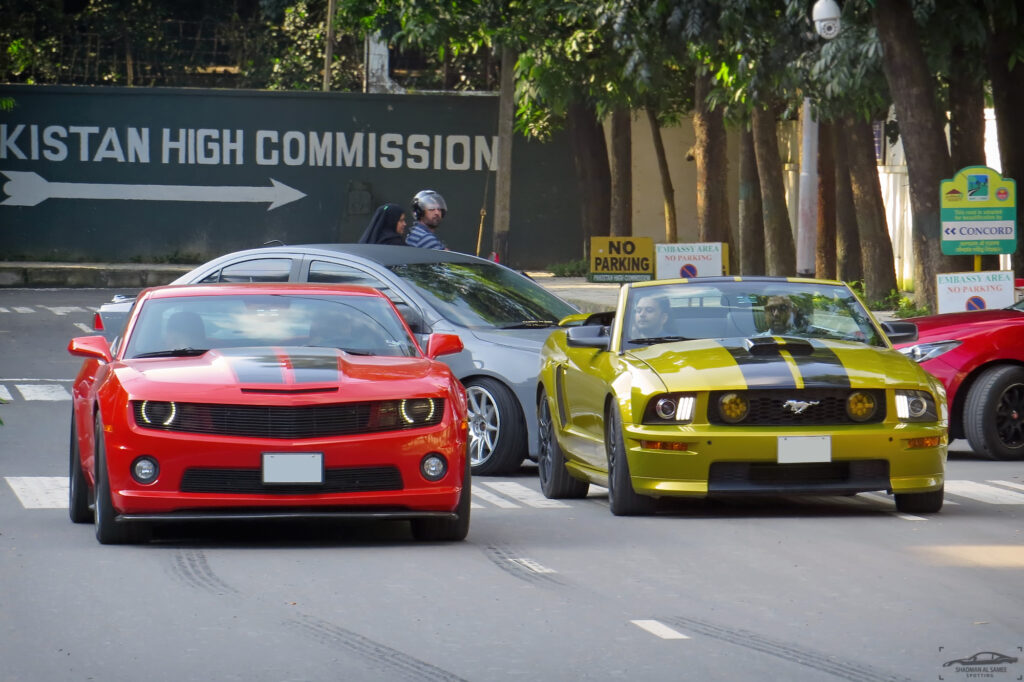
4. **The Corporate Shift: Shared Engines and Diminishing Differences**
The automotive landscape underwent a significant transformation with the debut of the third-generation F-body for the 1982 model year, ushering in a new era for both the Camaro and Firebird. This period marked a pivotal shift from the highly differentiated engine offerings of previous decades to a more standardized, corporate approach. From this point forward, both the Camaro and Firebird began utilizing the same corporate Chevrolet engines, effectively bringing an end to the era of unique divisional powertrains that had once set them apart.
While the significant mechanical differentiation under the hood largely disappeared, both cars continued to maintain their own unique styling elements and distinct branding. The Camaro retained its aggressive, sporty persona, while the Firebird continued its tradition of more upscale and performance-oriented aesthetics, often with bolder design cues. These visual distinctions, however, became the primary means by which General Motors kept the two models visually separate and appealing to their respective fan bases, even as their mechanical heartbeats grew more aligned.
There was one notable, albeit limited, exception to this new rule of shared engines. The 1989 Trans Am Turbo stood out as the last Firebird to feature an engine not offered in the Camaro. This special edition model utilized a version of the potent turbocharged V6 engine, famously derived from the iconic Buick Grand National, offering a final glimpse into Pontiac’s distinct engineering heritage. This brief revival of unique powertrain offerings served as a powerful send-off to an era that was rapidly fading.
From that point onward, and through the entirety of the fourth and final generation of the F platform, the Camaro and Firebird became truly identical under the hood. This consolidation reflected broader corporate strategies at General Motors, prioritizing efficiency and shared componentry. While this approach streamlined production and costs, it also diminished some of the unique character that had previously defined the friendly rivalry between these two American automotive legends. The shared heart of these cars underscored a shift in how muscle cars would be conceived and produced in the modern age.
Car Model Information: 2018 Chevrolet Camaro 1SS
Name: Chevrolet Camaro
Manufacturer: Chevrolet
Production: 1966–2002,2009–2023
ModelYears: 1967–2002,2010–2024
Class: Pony car
BodyStyle: coupe,convertible
Platform: GM F platform,GM Zeta platform,GM Alpha platform
Layout: Front-engine, rear-wheel-drive layout
Categories: 1970s cars, 1980s cars, 1990s cars, 2+2 coupés, 2000s cars
Summary: The Chevrolet Camaro is a mid-size American automobile manufactured by Chevrolet, classified as a pony car. It first went on sale on September 29, 1966, for the 1967 model year and was designed to compete with the Ford Mustang. The Camaro shared its platform and major components with the Firebird, produced by General Motors’ Pontiac division that was also introduced for the 1967 model year.
Four distinct generations of the Camaro were developed before production ended in 2002. The nameplate was revived on a concept car that evolved into the fifth-generation Camaro; production started on March 16, 2009.
Production of the sixth generation of the Camaro ended in December 2023, for the 2024 model year.
Get more information about: Chevrolet Camaro
Buying a high-performing used car >>>
Brand: Chevrolet Model: Camaro
Price: $33,988 Mileage: 49,199 mi.
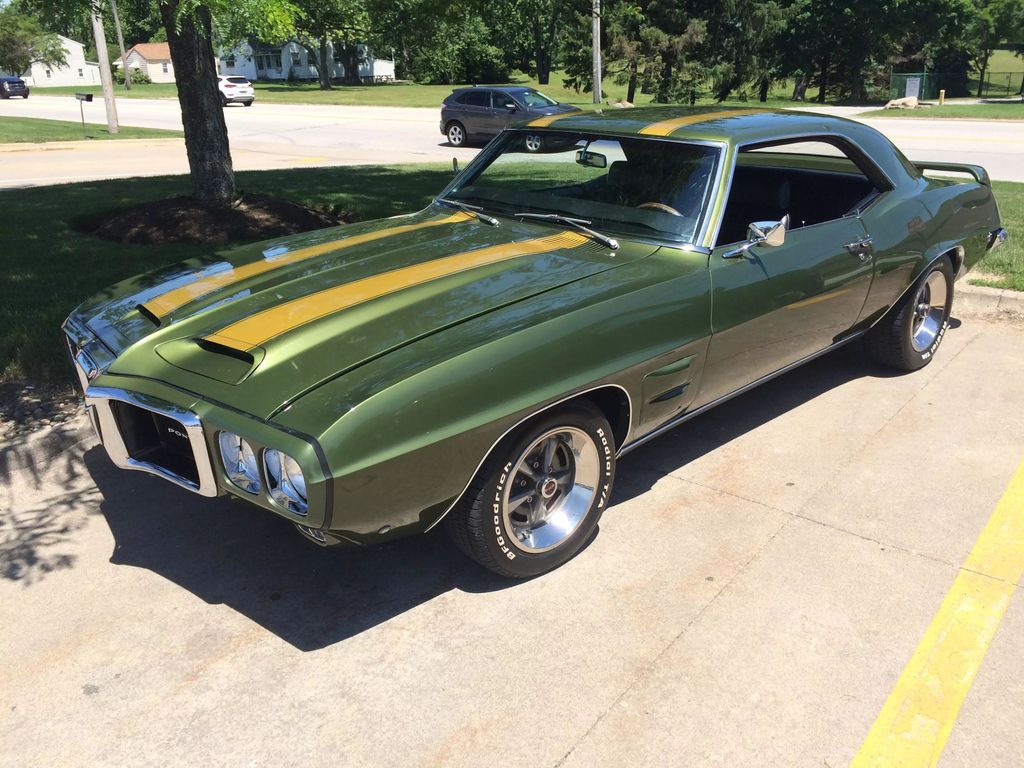
5. **The End of an Era: F-body Platform Discontinuation and Pontiac’s Demise**
The year 2002 marked a somber milestone for enthusiasts of American performance, as both the Chevrolet Camaro and Pontiac Firebird models were discontinued. This decision effectively ended the production run of the venerable F-body platform, drawing a close to a 35-year saga of parallel adventures for these iconic pony cars. The departure of these mainstays left a significant void in the American automotive market, signalling the conclusion of a distinct chapter in performance vehicle history.
For a time, the hope for a new Firebird flickered. It wasn’t long before rumors and then tangible concepts of a new, retro-influenced fifth-generation Camaro began to appear, igniting speculation that a companion Firebird might eventually rejoin the Pontiac lineup. The idea of a revitalized, retro-styled Firebird, sharing a modern platform with its Chevrolet counterpart, fueled many conversations among enthusiasts who cherished the dual legacy of these cars. This vision, however, was ultimately not to be realized, as external circumstances dictated a different outcome for Pontiac.
What ended up being a moot point for the Firebird came with the stunning announcement in 2009: General Motors declared that the entire Pontiac brand was being shut down. This seismic decision brought an end to a storied marque that had, for decades, represented innovation, style, and performance within the GM family. Pontiac joined a growing list of discontinued GM brands, a casualty of changing economic climates and corporate restructuring, permanently altering the landscape of American automotive manufacturing.
Following Pontiac’s unfortunate demise, the Camaro embarked on a solitary journey, continuing to carry the torch of the F-body legacy for two additional generations. It stood as the lone standard-bearer for the type of performance and style that it and the Firebird had once collectively championed. However, even the legendary Camaro was not immune to changing market dynamics, as Chevrolet eventually pulled the plug on its iconic pony car after the 2024 model year, bringing an end to an illustrious lineage and closing a significant chapter in the story of American muscle.
Car Model Information: 2018 Chevrolet Camaro 1SS
Name: Chevrolet Camaro
Manufacturer: Chevrolet
Production: 1966–2002,2009–2023
ModelYears: 1967–2002,2010–2024
Class: Pony car
BodyStyle: coupe,convertible
Platform: GM F platform,GM Zeta platform,GM Alpha platform
Layout: Front-engine, rear-wheel-drive layout
Categories: 1970s cars, 1980s cars, 1990s cars, 2+2 coupés, 2000s cars
Summary: The Chevrolet Camaro is a mid-size American automobile manufactured by Chevrolet, classified as a pony car. It first went on sale on September 29, 1966, for the 1967 model year and was designed to compete with the Ford Mustang. The Camaro shared its platform and major components with the Firebird, produced by General Motors’ Pontiac division that was also introduced for the 1967 model year.
Four distinct generations of the Camaro were developed before production ended in 2002. The nameplate was revived on a concept car that evolved into the fifth-generation Camaro; production started on March 16, 2009.
Production of the sixth generation of the Camaro ended in December 2023, for the 2024 model year.
Get more information about: Chevrolet Camaro
Buying a high-performing used car >>>
Brand: Chevrolet Model: Camaro
Price: $33,988 Mileage: 49,199 mi.

6. **Understanding American Muscle Cars: Origins and Core Definition**
Muscle cars represent a unique and captivating segment of high-performance automobiles, instantly recognizable for their powerful engines and aggressive styling. These vehicles typically feature robust V8 engines, serving as the cornerstone of their exhilarating driving experience that deeply appeals to enthusiasts. The allure of muscle cars extends far beyond mere speed; it encompasses a vibrant culture that celebrates freedom, embodies a rebellious spirit, and boasts a rich history inextricably tied to American automotive innovation.
Their origins can be traced back to the American automotive scene of the late 1940s and early 1950s. Initially, muscle cars were typically characterized as mid-sized production cars that had been fitted with upgraded engines, placing a clear emphasis on raw speed and unadulterated performance. This foundational concept laid the groundwork for the more specialized and iconic models that would follow, capturing the imagination of a growing youth market eager for accessible power.
Many automotive historians credit the Pontiac GTO, introduced in 1964, as the first true muscle car. This groundbreaking vehicle perfectly embodied the emerging definition by combining a relatively lightweight body with a high-output V8 engine. The GTO set a definitive standard for future models, demonstrating how a potent powertrain in a modest package could revolutionize performance offerings. It ushered in an era where power and style were democratized, making high-performance driving attainable for a broader audience.
Key features that define these American legends include their larger engines, an uncompromising emphasis on straight-line speed, and a distinct aesthetic that instantly appealed to younger drivers seeking thrill and individuality. Classic examples like the Oldsmobile 442 and the Dodge Charger Daytona quickly became powerful symbols of American automotive culture, embodying the nation’s passion for bold design and thrilling performance. These vehicles weren’t just cars; they were statements of intent.
Read more about: Why Gen Z is Passing on These Iconic Classic Cars: Understanding the Generational Shift in Automotive Preferences
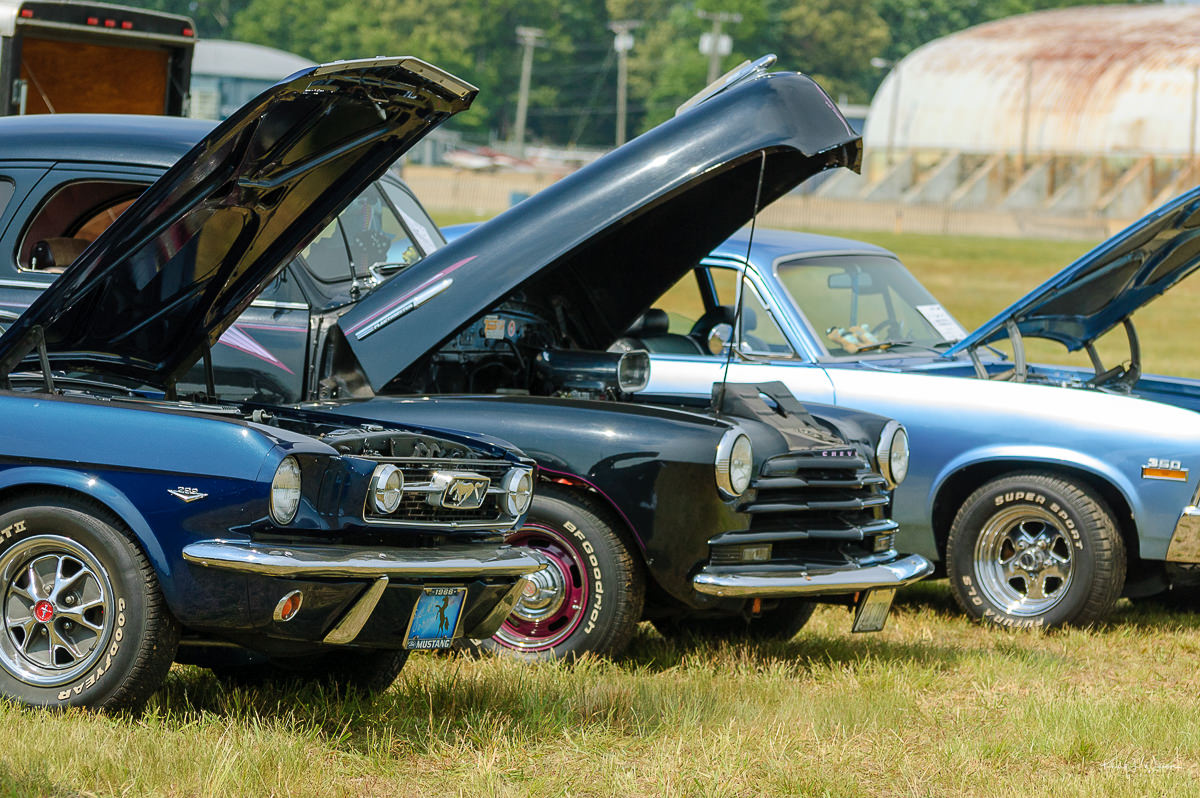
7. **The Golden Age of Muscle Cars: 1960s and 1970s Dominance**
The 1960s and early 1970s are universally recognized as the golden age of muscle cars, a period when these high-performance machines truly dominated the American automotive landscape. Models like the Plymouth Road Runner, with its robust engines and aggressively styled physique, perfectly embodied the spirit of this era, captivating performance enthusiasts across the nation. This was a time of unbridled innovation and fierce competition, where automakers vied to produce the most powerful and exciting vehicles on the road.
During this incredibly dynamic period, leading manufacturers such as Ford and Chevrolet eagerly entered the burgeoning muscle car market with their own compelling offerings. This influx of competitors further fueled an intense, yet friendly, rivalry that pushed the boundaries of automotive engineering and design. The constant push for more horsepower and more distinctive styling meant that consumers were treated to an astonishing array of performance vehicles, each more thrilling than the last.
The genesis of this phenomenon lay in the American car culture itself. The pony car and muscle car movements truly emerged in the U.S. during the 1960s, driven by automakers’ strategic efforts to offer affordable cars equipped with powerful engines specifically for the rapidly expanding youth market. This demographic sought vehicles that not only provided exhilarating performance but also conveyed a sense of style and individuality, aligning perfectly with the ethos of the decade.
Cars like the Chevrolet Camaro and the Pontiac Firebird epitomized this vibrant era, offering a compelling combination of raw power, distinctive style, and remarkable accessibility. These vehicles deeply resonated with American ideals of freedom and individuality, becoming extensions of their owners’ personalities and aspirations. They were more than just modes of transportation; they were cultural statements, embodying the very spirit of a nation on the move.
However, this glorious period of muscle car dominance was not destined to last indefinitely. The tide began to turn in the late 1970s, as the twin pressures of the oil crisis and increasingly stringent government regulations led to a significant decline in muscle car production. These shifts forced automakers to pivot dramatically towards more fuel-efficient vehicles, a move that severely reduced the popularity and availability of the traditional, gas-guzzling muscle car. It marked the end of an era, but not the end of the muscle car’s enduring legend.
Car Model Information: 2020 Hyundai PALISADE SEL
Name: Plymouth Road Runner
Assembly: Detroit,Michigan
Manufacturer: Plymouth (automobile)
Class: Mid-size car
Production: 1968–1980
Related: unbulleted list
Layout: FR layout
Categories: 1970s cars, 1980s cars, All articles needing additional references, All articles with peacock terms, All articles with unsourced statements
Summary: The Plymouth Road Runner is a muscle car introduced by Chrysler in the United States for the 1968 model year and marketed under its Plymouth brand. Initially based on the Belvedere, the brand’s basic mid-size model, the Road Runner combined a powerful engine with a spartan trim level and a price that undercut increasingly upscale and expensive muscle cars such as the Pontiac GTO and Plymouth’s own GTX. It was initially a sales success.
The Road Runner was built in three generations on the mid-size B platform. Like most muscle cars, its performance and sales declined in the 1970s due to an increasing focus on fuel economy and the adoption of more stringent U.S. emission standards. The nameplate became to a trim package for the compact Plymouth Volaré for model year 1976—no longer offering any special performance capability—and was discontinued in 1980.
Get more information about: Plymouth Road Runner
Buying a high-performing used car >>>
Brand: Plymouth Model: Road Runner
Price: $22,884 Mileage: 82,599 mi.
Read more about: Beyond the Bandit: 12 Legendary Pontiacs You Need to Know (and Possibly Own) Before They’re Gone Forever
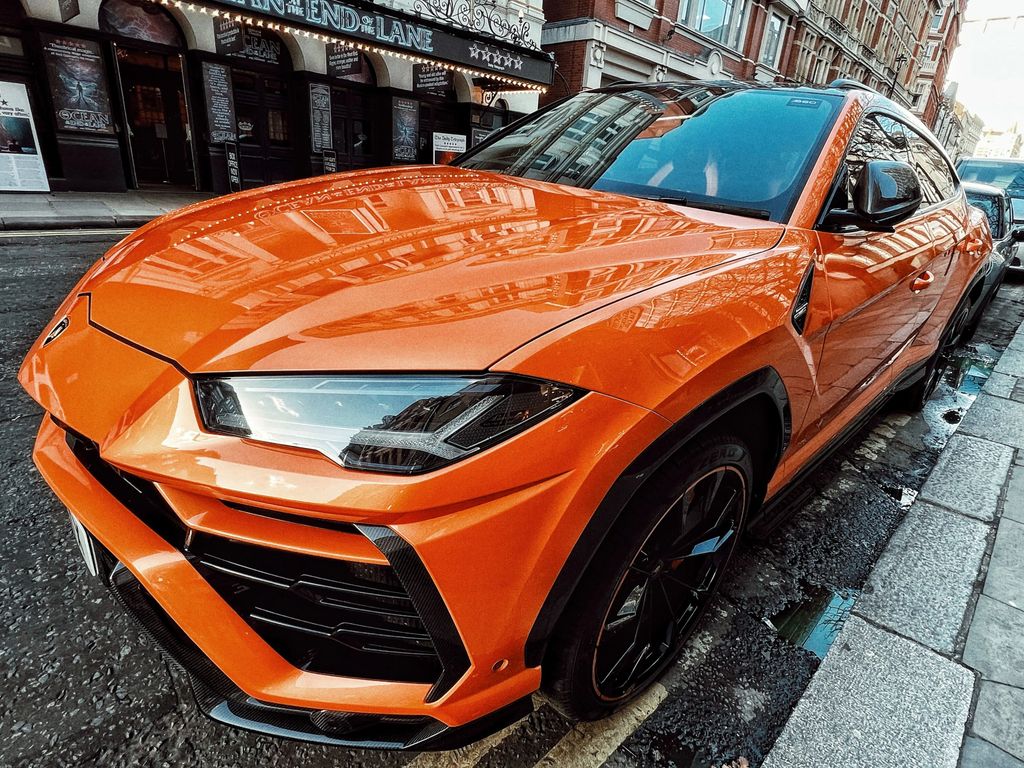
8. **The Resurgent Roar: Modern Revival of American Muscle**
After facing significant headwinds in the late 1970s and subsequent decades, the American muscle car wasn’t destined for permanent obscurity. Indeed, the new millennium heralded a powerful and exhilarating revival, driven by a compelling blend of deep-seated nostalgia and a renewed, undeniable demand for high-performance vehicles. This resurgence wasn’t just a fleeting trend; it marked a profound reawakening for an automotive segment that many enthusiasts feared had been permanently relegated to the history books.
Manufacturers keenly recognized the potent market desire for vehicles that blended the visceral appeal of classic muscle with the necessities of modern engineering. This led to the enthusiastic reintroduction of iconic models, most notably the Dodge Challenger and the Ford Mustang. These modern interpretations deftly married classic design aesthetics with significant technological advancements, integrating contemporary features for improved efficiency, safety, and everyday usability, proving that muscle could evolve without losing its soul.
This new era saw automakers pushing boundaries not just in terms of raw horsepower, but also through sophisticated performance enhancements. Innovations like turbocharging, supercharging, and advanced aerodynamics became central to attracting a new generation of drivers. These advancements delivered astounding power outputs and dynamic capabilities, ensuring that the new wave of muscle cars could hold their own, and often surpass, their storied predecessors in sheer performance metrics.
Ultimately, this vibrant revival represents a remarkable triumph—a blend of vintage appeal and cutting-edge contemporary engineering. It’s a testament to the enduring legacy of muscle cars, showcasing how their spirit can be preserved, honored, and propelled into the future, all while meeting the heightened expectations of today’s discerning automotive enthusiasts. The roar is back, and it’s louder and more refined than ever.
Read more about: The Resurgent Roar: Unearthing Eight Forgotten Luxury Car Brands Poised for a Modern Comeback
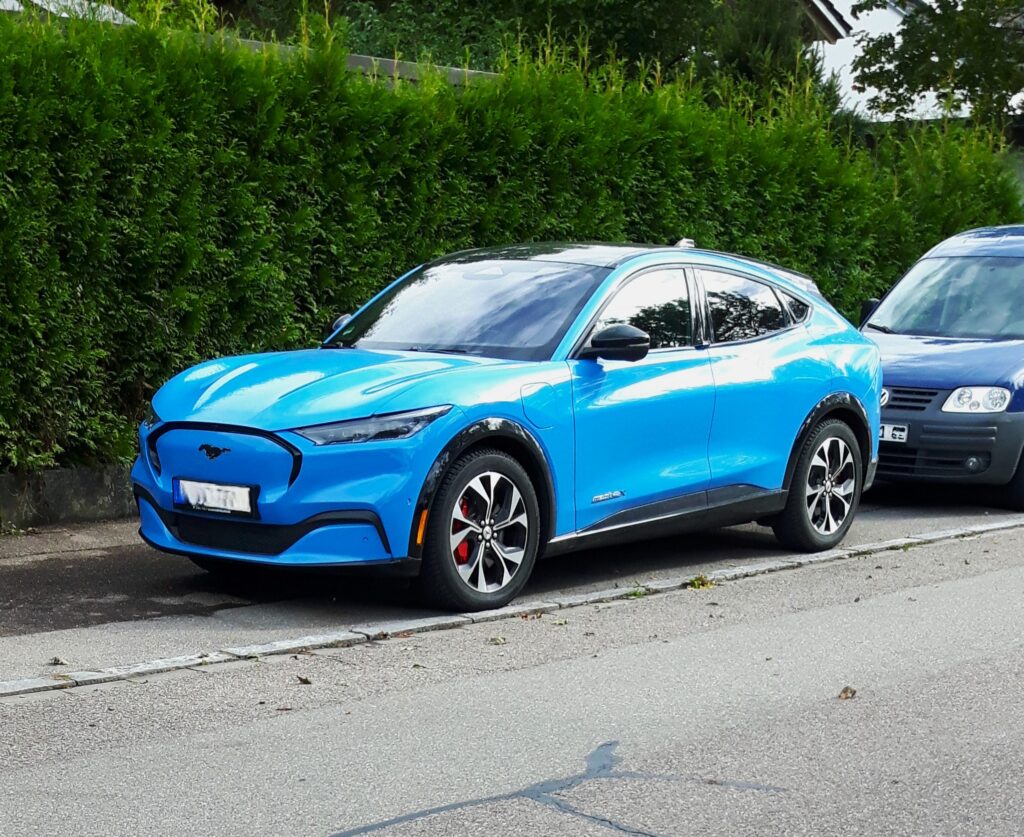
9. **Iconic Models Revisited: The Enduring Allure of the Ford Mustang**
While the Camaro and Firebird defined a significant chapter, the pantheon of American muscle cars is rich with legends. Among them, the Ford Mustang stands as a true icon, a vehicle that not only revolutionized the automotive landscape upon its debut in 1964 but has also maintained an unwavering allure for decades. Its sporty design, exceptional performance potential, and sheer accessibility instantly captured the imagination of a burgeoning youth market, kickstarting the pony car phenomenon.
Throughout its illustrious history, certain Mustang variants have etched themselves permanently into the annals of performance. The Mustang Boss 429, for instance, remains a particularly notable machine, featuring a robust 429 cubic inch V8 engine that was specifically designed and developed for racing homologation. This powerhouse cemented the Mustang’s credentials as a serious contender on both the road and the track, showcasing Ford’s commitment to performance.
Ford’s commitment to innovation and diversity within the Mustang lineup has been relentless, evidenced by the countless trims, special editions, and high-performance variants that have graced the roads. The Shelby variants, developed in collaboration with the legendary Carroll Shelby, stand out as prime examples, pushing the boundaries of performance and collectibility. These cars are more than just vehicles; they are rolling pieces of automotive art and engineering excellence.
With each passing generation, the Mustang has consistently managed to reinvent itself while remaining true to its core identity. Its popularity has remained unwavering, a testament to its compelling combination of style, power, and heritage. It continues to represent the very essence of American muscle car culture, embodying a spirit of freedom and exhilarating performance that resonates deeply with enthusiasts across the globe, solidifying its status as an undisputed automotive legend.
Car Model Information: 2024 Ford Mustang Mach-E GT
Name: Ford Mustang
Caption: 2018 Ford Mustang GT 5.0
Aka: Ford T5 (Germany)
Manufacturer: Ford Motor Company
Production: March 1964 – present
ModelYears: 1965–present
Class: Unbulleted list
BodyStyle: Unbulleted list
Layout: Front-engine, rear-wheel-drive layout
Categories: 1970s cars, 1980s cars, 1990s cars, 2+2 coupés, 2000s cars
Summary: The Ford Mustang is an American automobile manufactured and marketed by Ford since 1964, as Ford’s longest nameplate in continuous production. Currently in its seventh generation, it is the fifth-best selling Ford car nameplate. The namesake of the “pony car” automobile segment, the Mustang was developed as a highly styled line of sporty coupes and convertibles derived from existing model lines, initially distinguished by its pronounced “long hood, short deck” proportions.
Originally predicted to sell 100,000 vehicles yearly, the 1965 Mustang became the most successful vehicle launch since the 1927 Model A. Introduced on April 17, 1964 (16 days after the Plymouth Barracuda), over 400,000 units were sold in its first year; the one-millionth Mustang was sold within two years of its launch. In August 2018, Ford produced the 10-millionth Mustang; matching the first 1965 Mustang, the vehicle was a 2019 Wimbledon White convertible with a V8 engine.
The success of the Mustang launch led to multiple competitors from other American manufacturers, including the Chevrolet Camaro and Pontiac Firebird (1967), AMC Javelin (1968), and Dodge Challenger (1970). It also competed with the Plymouth Barracuda, which was launched around the same time. The Mustang also had an effect on designs of coupes worldwide, leading to the marketing of the Toyota Celica and Ford Capri in the United States (the latter, by Lincoln-Mercury). The Mercury Cougar was launched in 1967 as a unique-bodied higher-trim alternative to the Mustang; during the 1970s, it included more features and was marketed as a personal luxury car.
From 1965 until 2004, the Mustang shared chassis commonality with other Ford model lines, staying rear-wheel-drive throughout its production. From 1965 to 1973, the Mustang was derived from the 1960 Ford Falcon compact. From 1974 until 1978, the Mustang (denoted Mustang II) was a longer-wheelbase version of the Ford Pinto. From 1979 until 2004, the Mustang shared its Fox platform chassis with 14 other Ford vehicles (becoming the final one to use the Fox architecture). Since 2005, the Mustang has used the D2C platform, unique to the Mustang.
Through its production, multiple nameplates have been associated with the Ford Mustang series, including GT, Mach 1, Boss 302/429, Cobra (separate from Shelby Cobra), and Bullitt, along with “5.0” fender badging (denoting 4.9 L OHV or 5.0 L DOHC V8 engines).
Get more information about: Ford Mustang
Buying a high-performing used car >>>
Brand: Ford Model: Mustang
Price: $38,499 Mileage: 11,439 mi.
Read more about: The Golden Era Revisited: Unveiling 15 of the Most Stylish Cars from the 1960s
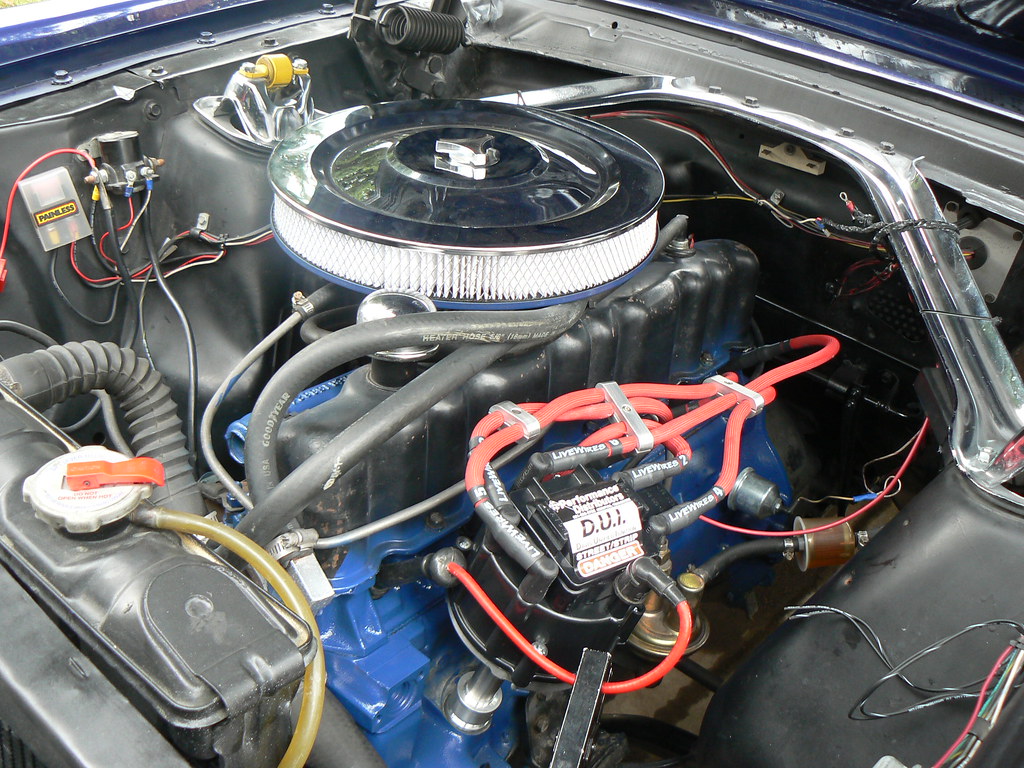
10. **Performance Heartbeat: Unpacking the Muscle Car Engine and Horsepower**
At the very core of every American muscle car lies its formidable powertrain—the heart that pounds with unbridled power. These machines are instantly recognizable and celebrated for their typically large-displacement V8 engines, which serve as the indispensable cornerstone of their exhilarating performance profile. This focus on a robust, high-output engine is what truly defines the muscle car experience, setting it apart in the automotive world.
These powerful engines are engineered to deliver immense power, often ranging from a potent 300 horsepower to well over 700 horsepower in today’s most extreme models, depending on the specific model and any subsequent modifications. This prodigious output translates directly into blistering quick acceleration and impressive top speeds, providing a thrilling, visceral connection between driver and machine that is uniquely satisfying. It’s about feeling that raw, unadulterated thrust.
Beyond the raw numbers, the auditory experience is an integral part of the muscle car’s appeal. The distinctive, guttural roar produced by these engines is a signature characteristic, instantly identifiable and deeply enhancing the overall driving experience. It’s a symphony of power that resonates with enthusiasts, signaling the immense potential held within the engine bay, an unmistakable sound that excites the senses and stirs the soul of any true car lover.
Contemporary examples perfectly illustrate this enduring commitment to power. The Ford Mustang GT, for instance, boasts a potent 5.0L V8 engine generating 450 horsepower, offering a compelling blend of everyday usability and track-ready performance. Similarly, the Chevrolet Camaro SS ups the ante with a 6.2L V8 producing 455 horsepower, while the Dodge Challenger R/T delivers a formidable 372 horsepower from its 5.7L V8, showcasing the diverse yet equally impressive offerings that continue to define the segment.
Read more about: Beyond the Icons: 13 Overlooked Pony Cars That Command Respect and Deserve a Second Look

11. **Dynamic Prowess: Mastering Handling and Dominating Drag Strips**
While the raw, unadulterated power of a V8 engine is undeniably central to the muscle car mystique, it’s only one facet of the complete performance picture. Increasingly, handling and driving dynamics play a significant role in the overall experience, especially as modern muscle cars seek to offer more than just straight-line speed. These vehicles are now engineered to connect with the road in a more sophisticated and engaging manner.
To achieve enhanced stability and cornering prowess, modern muscle cars often incorporate stiffer suspension systems. This firming of the chassis significantly reduces body roll, allowing the vehicle to maintain better composure during aggressive maneuvers and through challenging turns. Coupled with this, they are typically fitted with wider, high-performance tires and robust braking systems, all contributing to improved traction, superior grip, and immensely potent stopping power, which is vital for controlling their prodigious outputs.
This harmonious combination of elements—powerful engines, stiff suspensions, and advanced braking—enables these magnificent machines to execute nimble maneuvering even while maintaining blistering speeds. Furthermore, many contemporary models are now equipped with sophisticated technological advancements such as Traction Control Systems and Electronic Stability Control. These intelligent systems assist drivers in maintaining control, especially in less-than-ideal conditions, providing an added layer of confidence and safety.
Beyond road performance, drag racing remains a favored arena for muscle car enthusiasts, serving as the ultimate showcase for their vehicles’ raw power and speed. The typical muscle car, inherently designed for unparalleled straight-line acceleration, is perfectly suited for this demanding motorsport. Events focused on quarter-mile runs highlight crucial factors like launch techniques and tire grip, where iconic models like the Dodge Demon, known for its sub-10-second quarter-mile times, and the Chevrolet Camaro ZL1, balancing speed with handling, often dominate the strip. Racers frequently modify their vehicles with superchargers or enhanced exhaust systems, relentlessly pursuing every fraction of a second.
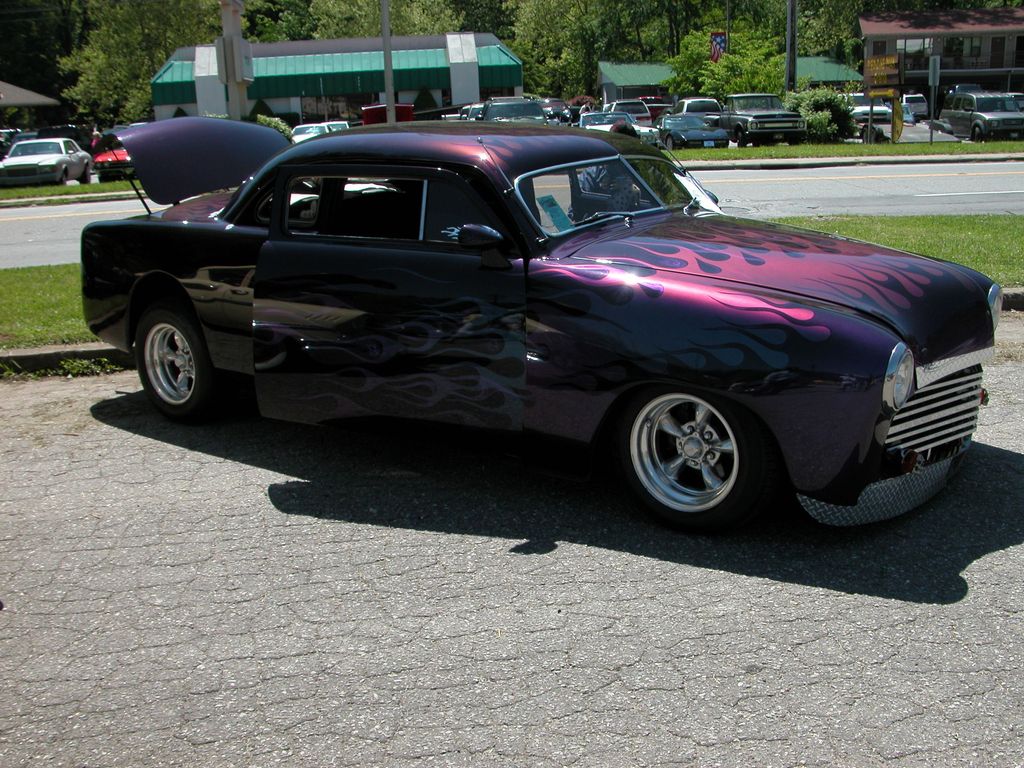
12. **Cultural Resonance: Muscle Cars in Media, Auctions, and American Identity**
More than just high-performance automobiles, muscle cars have profoundly shaped the American cultural landscape, becoming enduring symbols woven into the fabric of national identity. Their presence in various forms of media, their prominence in thriving collector markets, and their deep connection to the American ethos underscore their multifaceted impact, solidifying their status far beyond mere transportation.
Muscle cars have frequently commanded center stage in films and television, where they often symbolize freedom, rebellion, and adventure. Iconic movies such as *Bullitt* and *American Graffiti* were instrumental in showcasing these vehicles, elevating them from mere cars to bona fide cultural icons. Steve McQueen’s chase scene in a Ford Mustang in *Bullitt*, for example, solidified its legendary status, while the futuristic Pontiac Trans Am in *Knight Rider* further embedded muscle cars into the popular consciousness. Documentaries and car shows continue to celebrate their performance and design, fostering an ever-growing appreciation.
The market surrounding muscle cars has blossomed into a vibrant, thriving community of dedicated collectors and passionate enthusiasts. Specialized car shows and high-profile auctions exclusively dedicated to these vehicles draw in buyers who are prepared to invest significant sums for a piece of automotive history. Premier events like Barrett-Jackson and Mecum Auctions frequently see classic muscle cars fetch prices soaring into the six and even seven figures, with notable models like the Chevrolet Camaro and Dodge Charger consistently driving intense demand among discerning collectors.
Ultimately, muscle cars play a pivotal role in defining what America represents for many. They are potent symbols of freedom, raw power, and a distinctive performance culture that deeply resonates with the nation’s core values of innovation and individuality. The allure of convertible muscle cars further enhances this identity, offering open-air driving experiences that evoke a quintessential sense of American adventure. Vehicles such as the Chevrolet Corvette and Ford Mustang exemplify American ingenuity and engineering excellence, carrying forward a legacy that fuels pride and nostalgia across generations, reinforcing their indelible status as American cultural icons.

13. **Navigating the Market: Smart Buying and Collecting Strategies**
For those enchanted by the allure of American muscle, the journey of buying and collecting these iconic vehicles requires both passion and strategic insight. It’s a rewarding endeavor that connects enthusiasts with a rich automotive heritage, but navigating the market successfully means understanding where to look, what to prioritize, and how to approach it as an investment.
Fortunately, there are several excellent avenues for locating muscle cars, catering to various budgets and preferences. Auctions, for instance, frequently showcase rare and highly sought-after finds, providing a dynamic environment for bidding. Events like Autohunter Auctions offer dedicated platforms where both timeless classics and more modern iterations of muscle cars are made available. Additionally, online listings have become an invaluable resource, with specialist classic car websites constantly updating their inventories, providing a wealth of options for prospective buyers. Engaging with local car clubs can also prove highly beneficial, fostering connections with owners who might be looking to sell their prized possessions, and local car shows often reveal hidden gems within the community.
When it comes to purchasing a muscle car, buyers must meticulously assess several crucial factors. The condition of the vehicle is paramount; a thorough inspection for rust, a detailed assessment of engine integrity, and an overall evaluation of functionality are absolutely essential. Equally important is comprehensive documentation; provenance and a verifiable service history can significantly impact the car’s value and authenticity. Prospective buyers should also be vigilant in verifying whether any modifications are original or aftermarket, as this distinction profoundly affects both restoration costs and the vehicle’s historical correctness. Finally, practical budget considerations must be addressed, factoring in insurance, ongoing maintenance, and any potential restoration expenses, alongside verifying the car’s title to avoid any unforeseen legal complications.
Viewing muscle cars as an investment can indeed yield significant returns, provided the approach is wise and well-researched. Classic muscle cars, particularly rare and well-preserved examples, often appreciate considerably in value over time. A smart investment strategy involves researching ‘future classics’—models currently gaining traction and popularity—as these can offer excellent long-term prospects. Cars that possess strong emotional connections, a storied racing history, or significant cultural importance tend to maintain or increase their value more consistently. Building a well-rounded collection with diverse models can contribute to long-term investment stability, and staying updated on market trends through auction attendance and car enthusiast sites is crucial for making informed purchasing decisions.
Read more about: 15 Unbeatable Secrets Top Real Estate Agents Swear By to Sell Homes Faster and for More

14. **Preserving the Legend: Maintenance, Restoration, and Upgrades**
For any owner or collector of an American muscle car, the commitment extends far beyond the initial purchase; it involves a dedicated regimen of proper maintenance and, often, meticulous restoration to preserve the vehicle’s performance, aesthetic appeal, and intrinsic value. This unwavering attention to detail is paramount, not only extending a vehicle’s lifespan but also significantly enhancing its desirability and market standing, ensuring its legend endures for generations to come.
Keeping a muscle car running in peak condition necessitates a diligent adherence to regular maintenance tasks. These include routine oil changes, typically recommended every 3,000 to 5,000 miles to ensure optimal engine lubrication. Regular checks of all fluid levels—coolant, brake, and transmission fluids—are critical for operational integrity. Tire maintenance, involving rotations and alignments, is essential to prevent uneven wear and maintain handling characteristics. Furthermore, inspecting battery connections and diligently replacing filters, such as air and fuel filters, plays a vital role in sustaining the vehicle’s peak performance and preventing costly issues down the road.
Restoring a muscle car to its original glory is often an extensive and deeply rewarding project, demanding a thorough understanding of the specific model’s intricate details. A critical initial step is identifying genuine original parts versus any aftermarket substitutions, as authenticity is paramount for preserving historical accuracy and value. The restoration process typically begins with a comprehensive assessment and detailed planning, followed by scrupulous parts sourcing—ideally prioritizing authentic Original Equipment Manufacturer (OEM) parts for the best results. Intensive bodywork and paint preparation are also fundamental, addressing any rust or damage before a painstaking repaint in the original factory color, bringing the vehicle back to its showroom splendor.
Many muscle car enthusiasts also opt for thoughtful upgrades, aiming to enhance both performance and reliability without compromising the vehicle’s classic aesthetic. Common engine enhancements include the installation of high-performance carburetors, headers, and exhaust systems, all designed to liberate additional horsepower and torque. Suspension kits, whether lowering or performance-oriented, significantly improve handling and refine the ride quality. Upgraded braking systems, featuring advanced calipers and rotors, provide vastly improved stopping power, a critical safety enhancement for these powerful machines. The art lies in balancing these modern performance upgrades with the car’s inherent heritage, ensuring it remains true to its iconic character while benefiting from contemporary engineering advancements.
Read more about: Unleash Your Inner Gearhead: 14 Classic Car Restoration Projects Under $10K That Promise High Returns
From the thunderous symphony of their V8 engines to their timeless, aggressive silhouettes, American muscle cars are more than just automobiles; they are pulsating symbols of innovation, freedom, and an enduring spirit that captivates enthusiasts worldwide. Their journey from the roaring ‘golden age’ to their powerful modern resurgence is a testament to their enduring appeal and a vibrant community dedicated to preserving their legacy. Whether on the open road, the drag strip, or meticulously displayed at a car show, these legends continue to embody the very soul of American performance, reminding us that some passions, like the rumble of a classic V8, are simply timeless.



